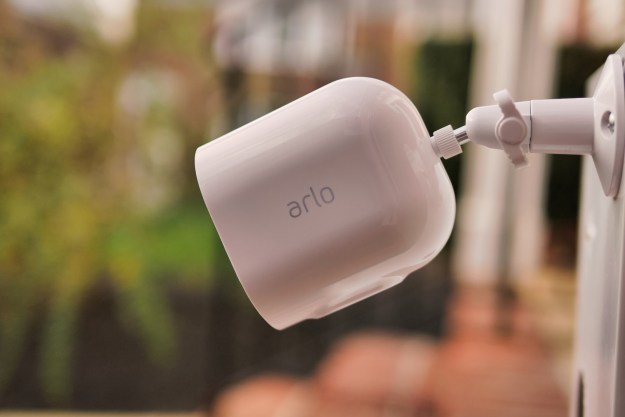Security cameras: What more do we want out of them? CES 2021 is knocking on our door and you can certainly expect a handful of them being introduced during the big show. Naturally, I expect the usual, iterative updates that make them better than previous offerings, like smarter recognition and better clarity. However, one area that’s often neglected or overlooked is how they take privacy more seriously in the home. With more people working from home and children learning remotely, there needs to be a sense of urgency when it comes to privacy with indoor cameras.
The sad truth
Hacks are inevitable, despite all the encryption and safety protocols that cameras have in place. That’s the sad truth. After all of the headaches Ring dealt with its cameras compromised by hackers, you would think that camera makers would be more cognizant about privacy. I detailed previously why hackers even want to hack cameras in the first place. Security expert and director of information security at Viperline Solutions said it best during my interview with him last year. “I think right now, people are doing it for kicks and giggles, and they’re just targeting solo,” said Hanis.
Even if hackers are doing it for fun at the expense of their victims, there’s just something unnerving about an invisible figure peering through your indoor camera. For starters, you may not even know your camera is compromised unless it starts acting out of character — like when you hear strange voices coming from it, which is a telling sign. While some models can disable the camera and microphone through an app, it’s worth pointing out that it’s still software-based. Meaning, it’s plausible that it can be bypassed by a hacker.
So, what can be done to protect our privacy in the home? Well, I’ve pleaded my case for cameras to implement more mechanical shutters into their designs.
Current solutions
Privacy, or mechanical shutters, come in various implementations. You have passive ones that require someone to physically move a switch or press a button for the cover/shutter to go over a camera’s lens, much like what you see in some smart displays with built-in cameras. The other, automatic mechanical shutters, are more complex because they are controlled with an actuator of some kind. The perfect example of this is SimpliSafe’s SimpliCam, which in my opinion is one of the most effective.

And why is that? That’s because it works in conjunction with SimpliSafe’s home security system, so when you leave and arm the system, the camera will automatically open the shutter to enable the camera to detect motion and record footage. More interesting, though, is the sound emitted by the SimpliCam’s shutter opening and closing — it’s audible and distinguishable, so you know when it has been activated.
Other cameras feature electronic-based privacy shutters that accomplish the same thing, but it’s all done through software. Take the mighty Google Nest Cam IQ Indoor, which intelligently knows when I’m home or not based on the GPS location of my phone. When I’m home, the camera is disabled electronically, but then kicks on when I’m outside of my home boundary. It’s useful, but there’s still that feeling that someone may be potentially watching because the camera’s lens is exposed.

Another practical implementation that has shown to be effective are security cameras that offer some sort of articulation. The Eufy Indoor Cam 2K Pan and Tilt offers 360-degree coverage thanks to its articulating camera, which can then be pointed downwards whenever it’s “turned off” through the app — so that the lens is tucked away.
These are all wonderful solutions, but privacy and mechanical shutters aren’t broadly incorporated. Given how people are spending more time in the home, it’s imperative that privacy is taken more seriously.
Trust is earned through commitment
As I alluded to earlier, the sad truth is that there’s still a disproportionate amount of indoor security cameras that barely scratch the surface when it comes to privacy. Crazy to say, but there are some cameras that don’t offer 2-factor authentication with their apps and services.
Cost is obviously a contributor to whether or not privacy features are incorporated into a new camera, but as I learned from speaking to Darrell Holigan, Senior Engineering Manager at SimpliSafe, it goes deeper beyond just the bill of materials. “There was a considerable amount of R&D effort that went into getting this shutter to perform properly,” Holigan explained. It’s this kind of commitment during the developmental stage that helps to instill confidence in a brand. Privacy should never be planned during the middle or end stages of development, but rather, it should be part of the foundation.
Companies that take this approach will earn trust from consumers. As the home continues to be a busy hub filled with ongoing activity, privacy should be treated with respect — so I hope we’ll see this becoming a trend from security cameras making their debuts during CES 2021.
Interested in finding out more about CES? Check out what to expect and keep an eye on our comprehensive CES coverage here.
Editors' Recommendations
- Beatbot makes a splash at CES 2024 with all-in-one robotic pool cleaner
- The TP-Link Tapo C120 is an affordable security camera designed for all environments
- Google Home adds support for Nest Cam Indoor
- SimpliSafe now offers live home monitoring with new Smart Alarm Wireless Indoor Security Camera
- The Wyze Cam Floodlight Pro is a premium outdoor camera with tons of AI features




